For quintessentially Italian food, there’s nowhere like the passionate, sun-drenched capital of Italy’s south.
Naples is beguiling. There’s no other word for it. Noisy, sprawling, and filthy it may be, but one look across that beautiful bay backed by the ominous hulk of Vesuvius and your heart will start melting. Stroll around some of Naples’ loveliest streets and visit some of its most wonderful churches, and resistance proves increasingly futile. Then you’ll eat something, and it’s all over. Now you love Naples, and always will love it. There’s no escape. The site of Naples apparently always has had this power to enchant. It was from here that the sirens sang to Odysseus on his not-so-mythological voyage along the Italian coastline in the eighth century BC. Parthenope was the chief siren of The Odyssey and also the name of the settlement that occupied this spot 3,000 years ago. But, enough of ancient history; let’s get back to food.
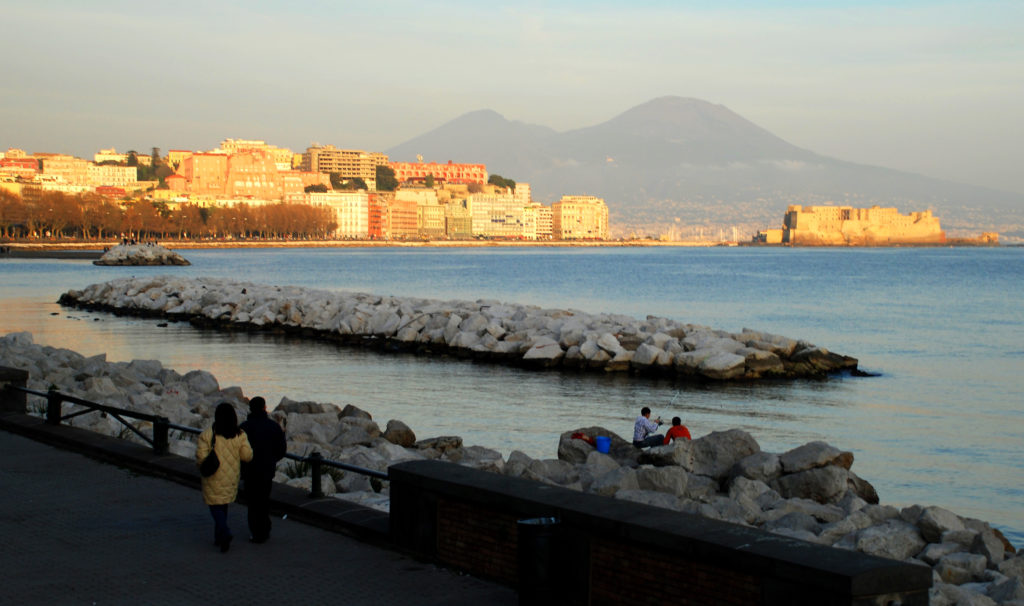
Neapolitan delights
Without the spectacular contributions to Italian cuisine made by generations of innovators in Naples, our popular notions of Italian food would be very different. This colourful, exuberant city is home to all the foodstuffs that most commonly signify Italy – pizza, pasta, tomatoes, mozzarella, ice cream. Each was invented here or reaches its apex of quality here. The aforementioned Grand Tourists took home indelible memories of Neapolitan foods and popularized them as typically Italian. Nineteenth-century Neapolitans, meanwhile, emigrated by the hundreds of thousands to America and the Antipodes, taking “Italian” (i.e., Neapolitan) dishes with them and spreading their fame. Thus, around the world, the food of Naples and the food of Italy have become inextricably linked.
The birthplace of Pizza
Pizza was invented in Naples, and this still is the place to eat it. The city teems with spartan, ceramic-tiled pizzerie selling unforgettable pizzas for absurdly little cost. Neapolitans live on it, and their standards are stratospherically high. The making is meticulous. Dough is hand-kneaded to within an inch of its life to ensure a maximum number of tiny air pockets inside, then left overnight or longer to yeastily ferment. Stretched into crude circles and slopped with toppings, the discs are poked into a wood-fired oven heated to about 500°F and left for just 90 seconds. Quick cooking at a high temperature means crispness on the outside and chewy softness inside. The texture is elastic rather than biscuity, with myriad pillowy bubbles charred on the edges and underside. The flavour, meanwhile, is deliciously distinctive and pancake-like.
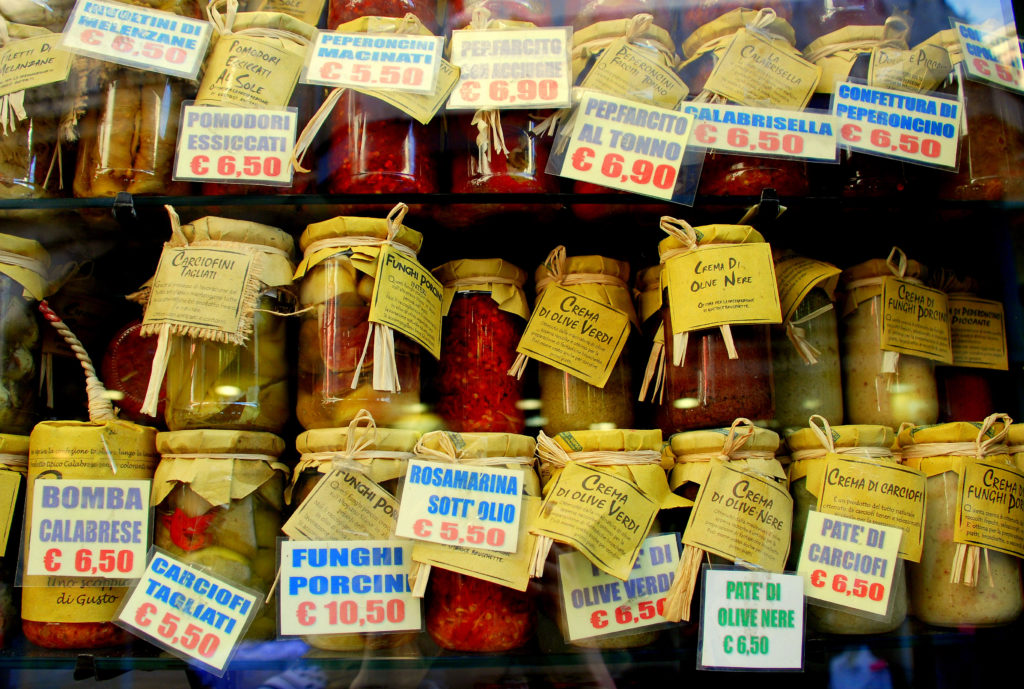
The best Mozzarella
Part of the fun, of course, is that you can watch them making the things – stretching the dough, casually slinging on the toppings, wielding a mighty oar to nimbly pop the pizzas into a flaming hole, and dexterously spinning them about inside. Pizzas as well-made as these don’t need elaborate toppings. In Naples, the varieties are very simple indeed.
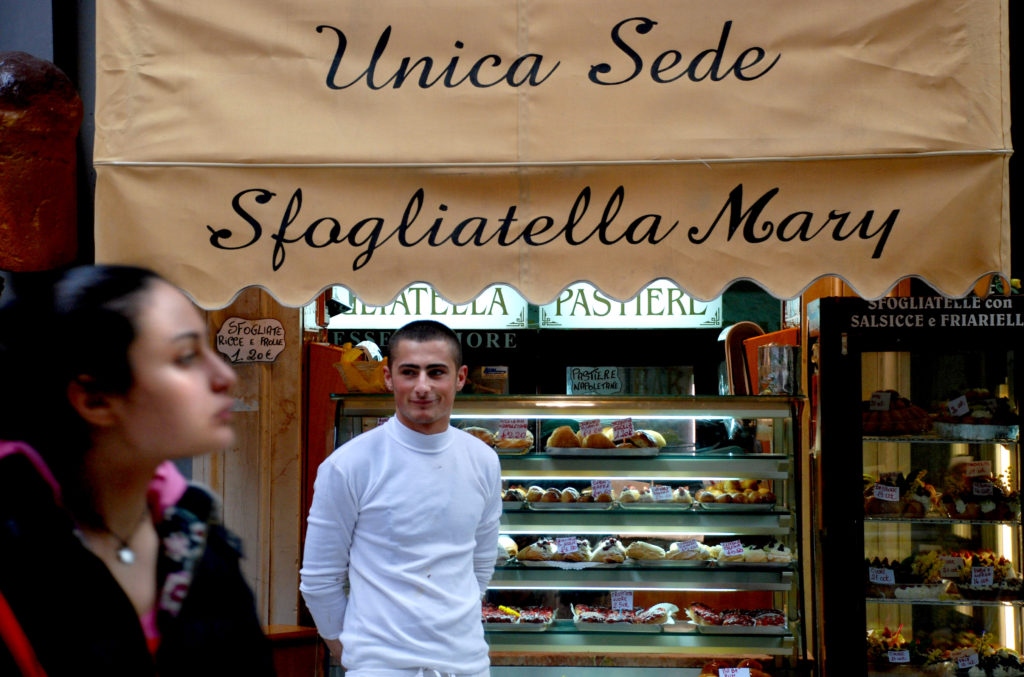
The Neapolitan staple is the marinara – topped with tomatoes, garlic, basil, and oil. (Note the absence of cheese, and don’t let the name fool you; it contains seafood!) The other basic is the margherita, with its mozzarella, basil and tomato sauce patriotically creating the colours of the Italian flag. This brings us to mozzarella, another Neapolitan triumph. Banish all thoughts of the rubbery bland goo that bedevils cheap pizzas outside Italy; we’re talking real mozzarella – made only in the Naples area, using 100 percent buffalo milk. (Make it with cow’s milk and the cheese is fior di latte, not mozzarella.) Pearly-white and latex-like on the outside, proper mozzarella drips with buffalo buttermilk when you cut into it. Velvety and moist in the mouth, it has a faintly mossy, faintly musky flavour, and tastes strangely non-dairy. Neapolitans often serve a huge ball of it as a starter, drizzled with oil, sprinkled with black pepper, and ringed by rocket leaves and tomatoes.
Pasta please!
Pasta long has been a Neapolitan speciality, with the dry conditions and fertile soil around the city ideal for growing durum wheat. Arguably Italy’s best pasta, and certainly the only pasta in the world with the equivalent of D.O.C. status, is made in Gragnano – a hill village just outside Naples. Gragnano’s cool temperatures and constant flow of drying air have proven ideal for a slow drying of pasta, which preserves the structural integrity of the wheat perfectly. Better-structured wheat means better taste and texture. Gragnano pasta is robust enough to be cut and shaped with bronze implements, rather than the Teflon commonly used on other pasta. Cutting with bronze means a slightly rougher surface texture, which gives a better mouth-feel and allows the pasta to grip more sauce.
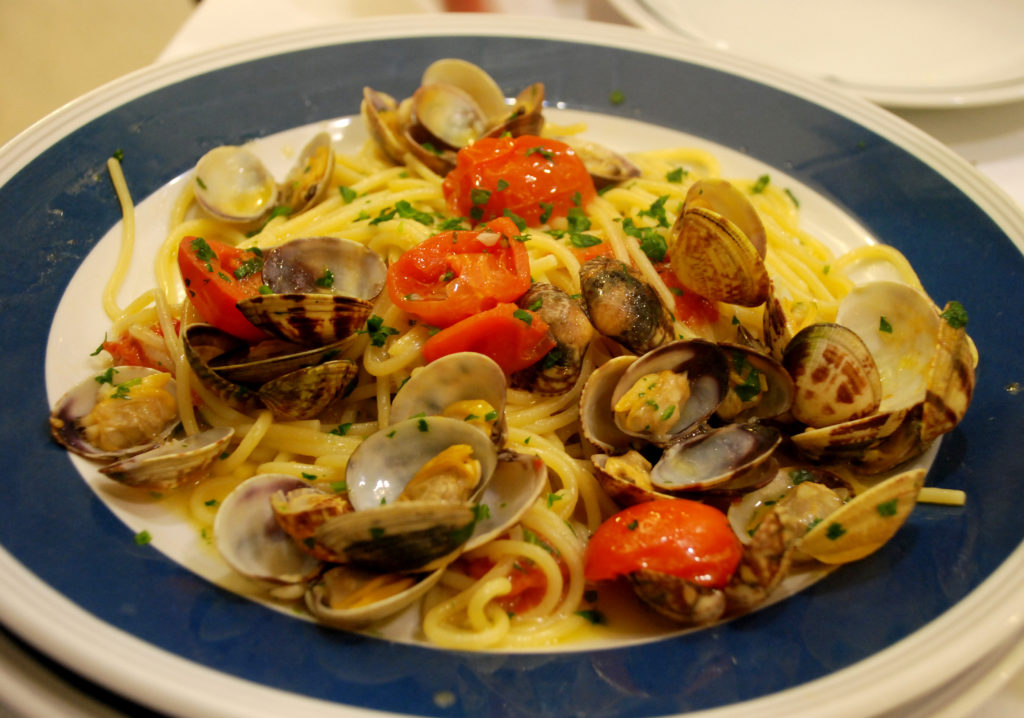
Home of Neapolitan sauces
Traditional Neapolitan pasta sauces, as you’d expect, make use of what’s abundant locally. Here, that means tomatoes, and seafood, and garlic, and oil. Spaghetti alle vongole is perhaps the city’s signature pasta dish, with vivid chunks of fresh tomatoes sitting prettily amidst clams still clinging to their open shells (it can be tiresome freeing the meat from the shells, but serving them like this guarantees freshness). Other pastas are served alla pescatore (with seafood, garlic, and oil), others just al pomodoro (dressed with intensely flavoursome tomatoes).
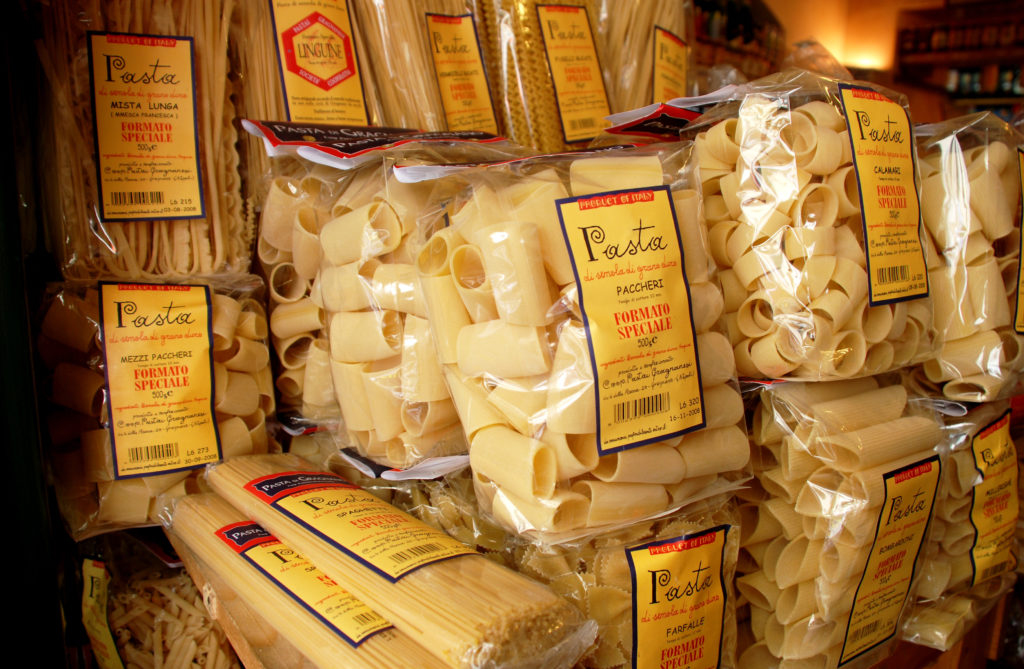
All Italian localities have made a contribution to the vast catalogue of pasta shapes, and Naples’ is pacchieri (“slaps”). Big, slabby tubes about three inches long and four around, they hold masses of thick sauce and slop very satisfyingly ’round the plate and the mouth. Vesuvius is a totemic feature on the Naples skyline, and it surely has helped to shape the Neapolitan character. Still an active volcano, and capable of wiping out a million people in a few minutes if it chose to, the brooding cone is emblematic of nature’s power and man’s ephemerality. It’s a constant reminder to citizens that they should seize the day, that they should live at full tilt – and eat like kings – for death could come tomorrow. More prosaically, it also gives Naples the best tomatoes in the world.
Sensational tomatoes
The mineral-rich volcanic soil at the mountain’s foot combined with the sunny Campanian climate creates the ideal terroir for the reddest and most flavoursome tomatoes possible. One variety in particular, the San Marzano, is famously delicious and grown to perfection only on the Vesuvian plain. Astonishingly deep red (and thus packed to the brim with health-giving, anti-oxidant lycopene), San Marzano tomatoes have a characteristic long shape with a pointed teat at the bottom. They have thinner skins than most varieties, and contain less water and therefore more pulp – making them ideal for sauce-making, with a maximum concentration of flavour. They’re used very widely in Neapolitan cooking, sliced fresh into salads or cooked up in pasta and pizza sauces. With tomatoes as stunningly full-flavoured as these available, it’s no surprise that tomatoes have long formed a cornerstone of Naples’ cuisine.
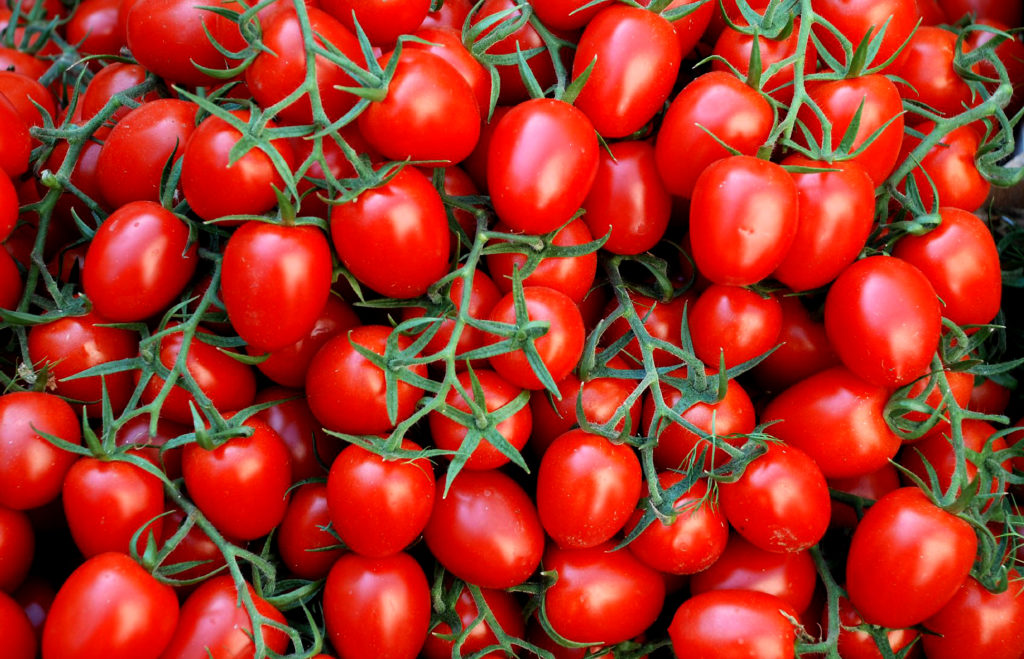
Nature has been extremely generous in facilitating lovely foodstuffs for this city. The same sun and fertile soil that breeds superlative tomatoes also breeds superb peppers, and soft fruits, and huge citrus.
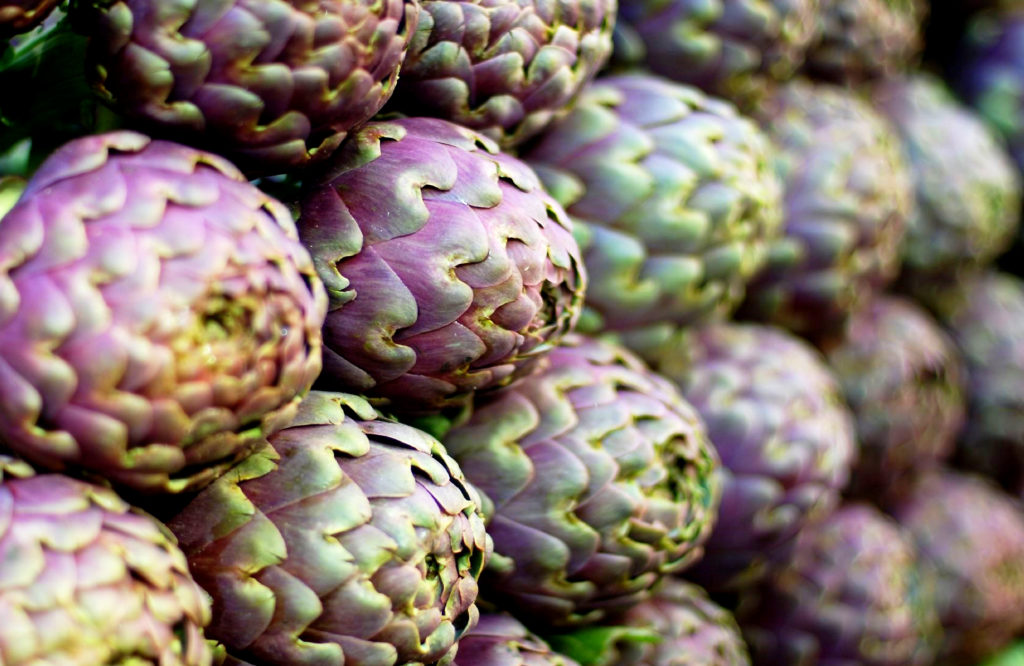
With hot summer days to survive, succulent fruits hanging from the trees, and snow-topped mountains teasing in the distance, perhaps it was inevitable that Naples should be the birthplace of ice cream (which first was made here in its recognisably modern form in the mid-1600s). It’s still made to perfection here now. As elsewhere in Italy, look for the words “produzione propria” or “gelato artigianale” before you slip inside a gelateria. These tell you that the ice cream is made on site, to artisan standards.

When Neapolitans aren’t squishing local fruit into gelato, they’re stuffing it into cakes and pastries. Don’t leave this city without trying a sfogliatella – an intricately ridged, shell-shaped case of flaky pastry filled with ricotta, semolina, candied fruit peel, and cinnamon. Che buona!
Listen on Kiwi Tripsters Podcast

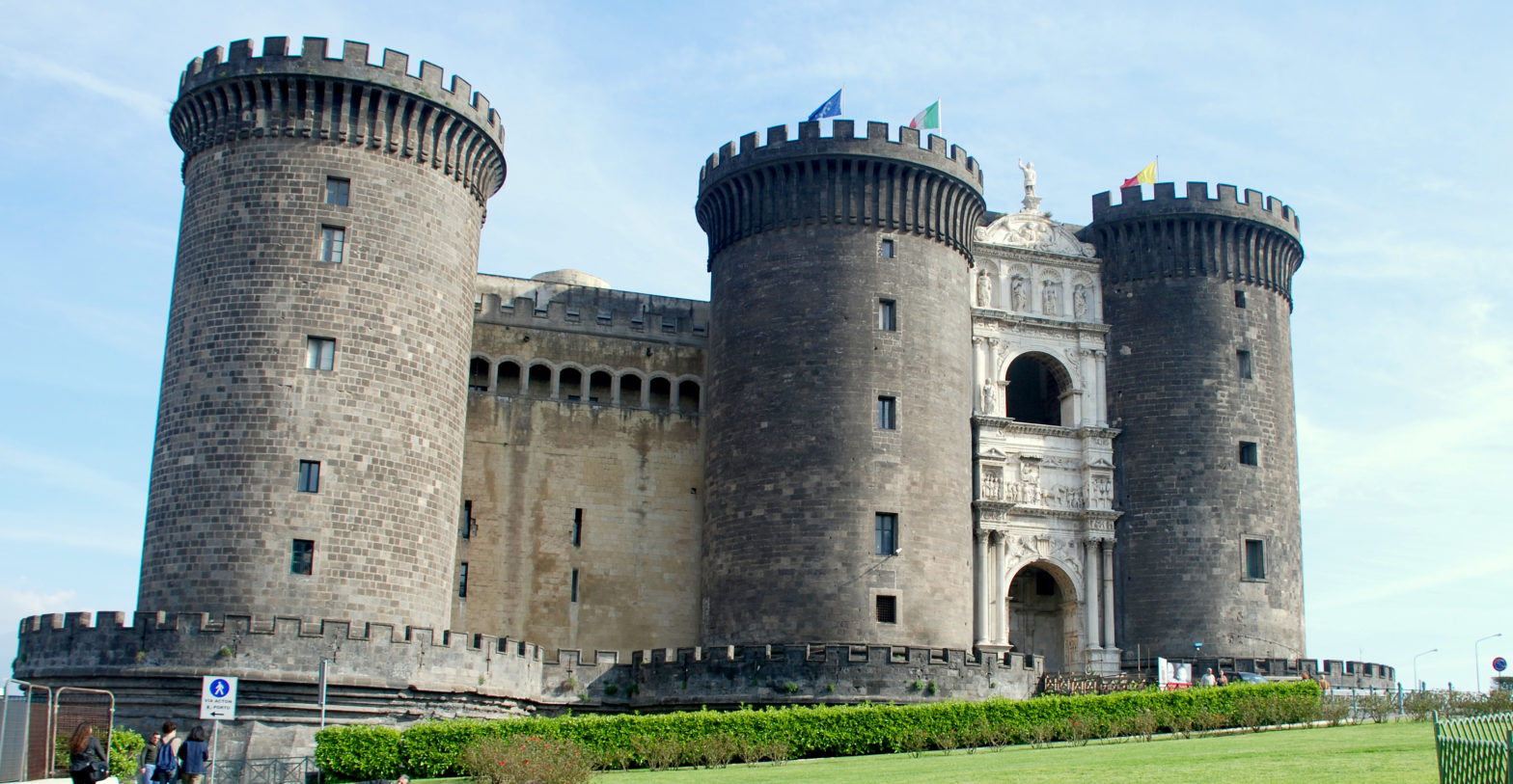











Recent Comments